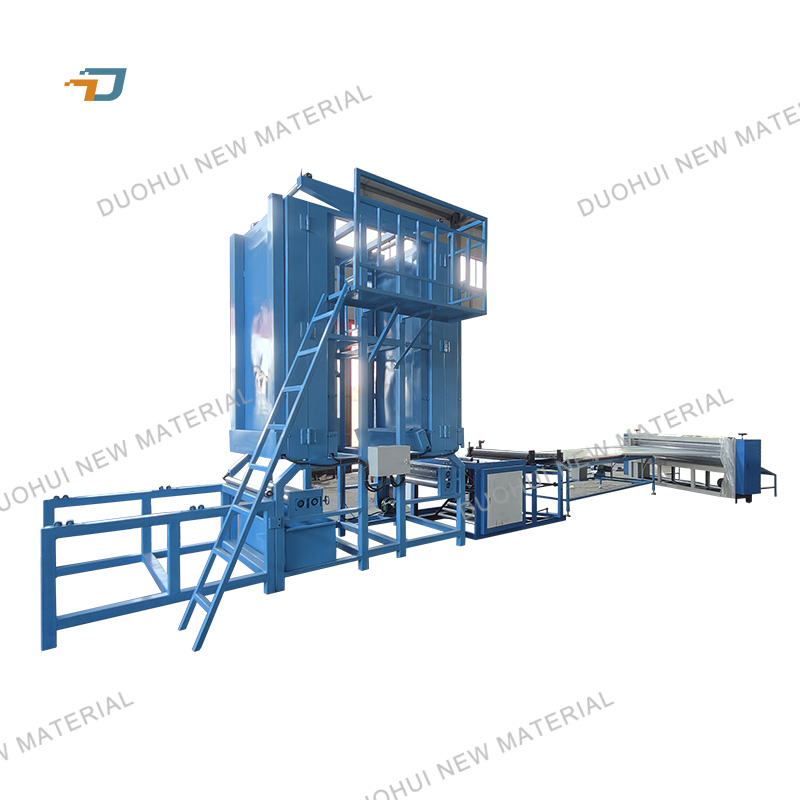
Evaporative cooling pad line pad making machine
2024-05-05 10:10

Material Handling and Cutting: Rolls of cellulose paper or other suitable materials are loaded onto the production line. These materials are then cut to the desired width and length using automated cutting machines.
Impregnation: The cut material passes through a station where it is impregnated with a specialized water-absorbing compound. This compound allows the pad to efficiently absorb and hold water, facilitating the evaporation process.
Layering and Bonding: Multiple layers of impregnated material are stacked together to form the thickness of the cooling pad. These layers are bonded together using a combination of pressure and adhesive application.
Cross-Corrugation: The stacked layers undergo a process known as cross-corrugation, where the layers are arranged in a crisscross pattern to maximize the surface area available for evaporation. This is a critical step in ensuring the efficiency of the cooling pad.
Drying and Curing: The bonded and corrugated pads are passed through a drying chamber or oven to remove excess moisture and cure the adhesive. This strengthens the bond between the layers and prepares the pads for the next stages of production.
Edge Sealing: The edges of the cooling pads are sealed to prevent water leakage and ensure structural integrity. This can be done using heat sealing or adhesive application.
Cutting and Shaping: The large sheets of bonded and corrugated material are cut into individual cooling pads of the desired dimensions. Automated cutting machines ensure precision and consistency in the cutting process.
Quality Control: Throughout the production line, quality control measures are implemented to ensure that the cooling pads meet the required standards. This may involve visual inspections, dimensional checks, and performance testing.
Packaging: The finished cooling pads are packaged for distribution and sale. Packaging may vary depending on the intended use and market requirements.
Each of these steps is essential for producing high-quality evaporative cooling pads that effectively cool air in various applications, such as agricultural ventilation, industrial cooling, and HVAC systems. Automated machinery and quality control processes are often employed to ensure efficiency and consistency in production.
Get the latest price? We'll respond as soon as possible(within 12 hours)










